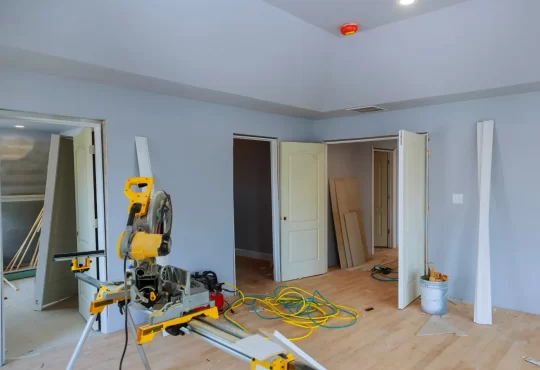
General Skilled Migration (GSM) is an Australian immigration program designed for skilled professionals. Who want to move to Australia permanently. It is a points-based system that evaluates candidates. That is based on their skills, education, work experience, age, and language proficiency.
To be eligible for GSM, candidates need to submit an Expression of Interest (EOI) through SkillSelect, an online platform used by the Australian government to manage skilled migration. The EOI is a preliminary application that provides information about the candidate’s skills and qualifications.
If a candidate meets the eligibility requirements and receives an invitation to apply, they can then submit a formal application for permanent residency. Successful applicants can live and work in Australia permanently, and may eventually be eligible for citizenship.
The GSM program is designed to attract highly skilled individuals who can contribute to the Australian economy and fill skill shortages in specific industries. The program is highly competitive, and candidates need to meet certain criteria to be considered for permanent residency.
Purpose of Skilled Migration
The purpose of skilled migration, also known as skilled immigration, is to attract highly skilled and qualified individuals from other countries to live and work in a destination country in order to contribute to the country’s economy and society. Skilled migration programs are typically designed to fill gaps in the local labor market by attracting workers with specific skills or qualifications that are in demand and not readily available locally.
The main objectives of skilled migration programs can include:
Economic Growth:
Skilled migrants can contribute to the local economy by filling skill shortages, starting businesses, creating jobs, and generating innovation. They can also contribute to the tax base, consumer spending, and economic productivity, which can boost economic growth in the destination country.
Addressing Labor Market Gaps:
Skilled migration can help address shortages of skilled workers in certain industries or professions, where there may be a lack of local talent. This can help meet the demand for specialized skills and expertise that are crucial for the growth and development of key sectors of the economy.
Enhancing Global Competitiveness:
Skilled migrants can bring diversity and international perspectives to the workforce, which can enhance the global competitiveness of the destination country. They can also help transfer knowledge, skills, and technology from their home country to the destination country, which can contribute to innovation and economic development.
Fostering Cultural Exchange and Social Cohesion:
Skilled migration can promote cultural exchange and diversity, and contribute to a multicultural society in the destination country. It can also help build social cohesion by facilitating integration and interaction among people from different cultural backgrounds, and promoting understanding and tolerance.
Addressing Demographic Challenges:
Skilled migration can help address demographic challenges such as aging populations and declining birth rates in some countries. Skilled migrants can help fill gaps in the labor force, support social welfare systems, and contribute to the sustainability of healthcare and pension systems.
Overall, the purpose of skilled migration is to attract highly skilled and qualified individuals to contribute to the economic, social, and cultural development of the destination country, and address specific needs in the labor market and society.
Why Should We Increase Skilled Migration?
There are several compelling reasons to consider increasing skilled migration in a country:
Addressing Labor Shortages:
In some cases, skilled migration can help address labor shortages in certain industries or professions. For example, in fields such as healthcare, engineering, and information technology, there may be a shortage of skilled workers due to factors such as demographic changes, technological advancements, or changes in labor market demand. Skilled migration can help fill these gaps and ensure that critical services and industries have the workforce they need to function effectively.
Enhancing Diversity and Cultural Enrichment:
Skilled migration can bring diversity to a country’s workforce and society, leading to increased cultural enrichment and cross-cultural exchange. This can foster creativity, innovation, and new perspectives that can benefit society as a whole. A diverse workforce can also lead to better decision-making, as individuals with different backgrounds and experiences can bring unique insights and ideas to the table.
Addressing Demographic Challenges:
Many countries are facing demographic challenges such as aging populations and declining birth rates, which can result in a shrinking workforce and increased strain on social welfare systems. Skilled migration can help address these challenges by replenishing the labor force with skilled workers who can contribute to the economy and support the social welfare system through their tax contributions.
Fostering Global Talent and Competitiveness:
Skilled migration can help a country attract and retain top talent from around the world, which can enhance its global competitiveness. Highly skilled individuals who choose to migrate can bring their expertise, networks, and global perspectives, which can boost the country’s innovation capacity, research capabilities, and overall competitiveness in the global marketplace.
Supporting Humanitarian Considerations:
Skilled migration can also be driven by humanitarian considerations, such as providing refuge and assistance to individuals who are fleeing persecution, conflict, or other forms of adversity in their home countries. Offering opportunities for skilled migrants to settle and contribute to a new society can help fulfill moral and ethical obligations, while also benefiting the receiving country through their skills and contributions.
How to Find Your Skills Gaps and Fix Them?
Identifying and addressing your skills gaps can be a crucial step in personal and professional development. Here’s a step-by-step guide on how to find your skills gaps and fix them:
Assess Your Current Skills:
Begin by evaluating your current skills in a self-assessment. Reflect on the skills you possess, including both hard skills (e.g., programming, data analysis, writing) and soft skills (e.g., communication, leadership, teamwork). Be honest with yourself and identify areas where you may lack proficiency.
Set Goals:
Once you have identified your skills gaps, set specific and measurable goals to address them. For example, if you realize you lack proficiency in a particular programming language, your goal could be to complete an online course or attend a workshop to improve your skills in that language.
Research and Resources:
Research and identify the resources available to address your skills gaps. This could include online courses, workshops, books, mentors, or other learning opportunities. Look for reputable sources that align with your learning style and goals.
Create a Plan:
Develop a plan that outlines the steps you need to take to address your skills gaps. This may include scheduling time for learning, setting milestones, and tracking your progress. Make sure your plan is realistic and achievable, considering your current commitments and responsibilities.
Take Action:
Start taking action on your plan. Enroll in relevant courses, attend workshops, read books, or seek guidance from mentors. Actively engage in the learning process and practice your skills through real-world applications.
Reflect and Adjust:
Regularly reflect on your progress and adjust your plan as needed. Be honest with yourself and acknowledge areas where you may need further improvement. Modify your plan accordingly to ensure you stay on track and continue to make progress.
Practice and Apply:
The key to improving your skills is practice and application. Look for opportunities to apply your newly acquired skills in real-world settings. This could be through work projects, volunteering, or personal projects. The more you practice, the better you will become.
Seek Feedback:
Seek feedback from mentors, colleagues, or others who can provide objective assessments of your skills. Feedback can help you identify areas where you may still have gaps and areas where you have improved. Use feedback to further refine your skills and continue your learning journey.
By following these steps and consistently working on addressing your skills gaps, you can improve your proficiency and enhance your overall capabilities. Remember, skills development is an ongoing process, and continuous learning and improvement are key to personal and professional growth.
Guide to Postgraduate RPL in Australia?
Sure! RPL stands for Recognition of Prior Learning, and it is a process that allows you to receive credit towards a postgraduate qualification in Australia based on your existing skills, knowledge, and experience, rather than solely relying on formal education. Here’s a guide to the postgraduate RPL process in Australia:
Understand the RPL process:
RPL is a formal assessment process carried out by educational institutions in Australia, such as universities or registered training organizations (RTOs). It involves assessing your existing skills, knowledge, and experience against the learning outcomes of the postgraduate qualification you wish to pursue.
Research Eligible Qualifications:
Identify the postgraduate qualifications for which you wish to seek RPL. These can include graduate certificates, graduate diplomas, master’s degrees, or doctorates in various fields, such as business, education, engineering, healthcare, IT, and more.
Review RPL Requirements:
Each educational institution may have its own specific RPL requirements, so review them carefully. Generally, you may be required to provide evidence of your skills, knowledge, and experience through documentation such as transcripts, qualifications, work samples, references, and testimonials.
Contact the educational institution: Reach out to the educational institution offering the postgraduate qualification and express your interest in seeking RPL. The institution will provide you with information on their RPL process, including application forms, submission deadlines, and any fees associated with the assessment.
Prepare your RPL Application:
Compile all the required documentation to support your RPL application. This may include transcripts, qualifications, certifications, CV/resume, work samples, references, and other relevant documents. Make sure your documentation is comprehensive and clearly demonstrates how your prior learning aligns with the learning outcomes of the postgraduate qualification.
Submit your RPL Application:
Submit your RPL application to the educational institution by the specified deadline. Ensure that you have followed all the instructions and provided all the necessary documentation. You may also need to pay any applicable RPL assessment fees at this stage.
RPL Assessment:
The educational institution will assess your RPL application based on their criteria and requirements. This may involve reviewing your documentation, conducting interviews or assessments, and comparing your skills, knowledge, and experience with the learning outcomes of the postgraduate qualification.
Receive RPL Outcome:
Once the assessment is completed, the educational institution will notify you of the outcome. If your RPL application is successful, you may be granted credit towards the postgraduate qualification, which means you can skip certain units or modules and complete your qualification in a shorter duration. If your RPL application is not successful, the educational institution will provide feedback on the reasons for the decision.
Enroll in the Postgraduate Qualification:
If you receive a positive RPL outcome, you can enroll in the postgraduate qualification and commence your studies. You may still need to complete any remaining units or modules to meet the requirements of the qualification.
Complete Your Postgraduate Qualification:
Study diligently and complete the remaining units or modules of your postgraduate qualification according to the program requirements. Once you successfully complete all the requirements, you will be awarded the postgraduate qualification, which is recognized nationally in Australia.
Note: RPL is not a guarantee of receiving credit towards a postgraduate qualification. It is a rigorous assessment process that requires you to provide robust evidence of your skills, knowledge, and experience. The outcome of your RPL application will depend on the assessment criteria and requirements of the educational institution. It’s important to carefully review and follow the instructions provided by the educational institution for a successful RPL application.
It’s important to note that skilled migration policies should be designed and implemented carefully, taking into consideration the needs of both the receiving country and the migrants themselves. Proper planning, integration support, and protection of migrant rights should be in place to ensure that skilled migration is managed in a fair, equitable, and sustainable manner.
General Skilled Migration (GSM) is a popular pathway for individuals who want to obtain permanent residency in Australia.
To be eligible for GSM, you must have a skill set that is in demand in Australia and pass a points-based test. Here are the five steps to obtain permanent residency through GSM:
Check Your Eligibility:
The first step is to check if you are eligible for GSM. This involves assessing your skills and experience, and ensuring that they meet the requirements for a skilled occupation on the relevant occupation list. You should also ensure that you meet the age, English language, and health requirements.
Submit an Expression of Interest (EOI):
If you meet the eligibility requirements, you will need to submit an EOI through the SkillSelect system. This involves providing information about your skills, experience, and personal details, and nominating an occupation from the relevant occupation list.
Receive an invitation to Apply:
If your EOI is successful, you will receive an invitation to apply for a visa. The invitation will specify the visa subclass that you should apply for and the date by which you must submit your application.
Apply for a VISA:
Once you have received an invitation to apply, you can submit a formal application for a visa. This involves providing detailed information about your skills, experience, and personal circumstances, as well as providing supporting documentation. You will also need to pay the relevant visa application fee.
Obtain a VISA and Move to Australia:
If your visa application is successful, you will be granted a visa that allows you to live and work in Australia permanently. You can then move to Australia and start your new life as a permanent resident.
It’s important to note that the GSM process can be complex, and it’s always a good idea to seek advice from a qualified immigration lawyer or agent to ensure that you meet all the requirements and have the best chance of success.




